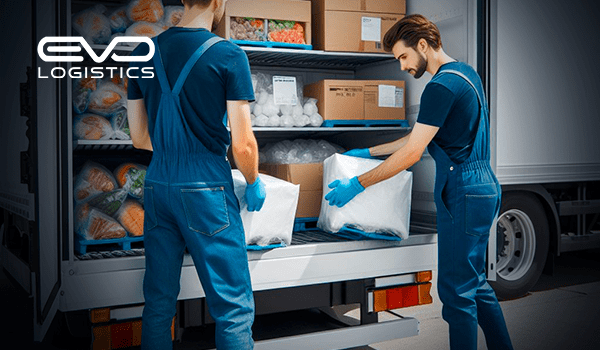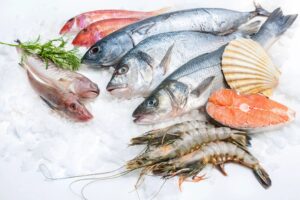How to Choose the Right Cold Chain Logistics Provider for Your Seafood Business

Seafood is highly perishable; therefore, maintaining freshness from harvest to the consumer’s table is crucial. Cold chain logistics play a vital role in this process. Selecting the best cold chain logistics for seafood involves understanding various components. Additionally, technologies and practices ensure quality and safety during transportation and storage. This article explores key considerations for choosing the best cold chain logistics for seafood. Moreover, it offers insights into how businesses can uphold the highest standards in their supply chain.
Understanding Cold Chain Logistics
Cold chain logistics involves transporting and storing temperature-sensitive products, like seafood, under controlled conditions to keep them fresh and safe. The process includes pre-cooling, refrigerated storage, transportation, and distribution. Each stage requires precise temperature control and monitoring to prevent spoilage and contamination.

Importance of Cold Chain Logistics in Seafood Industry
The seafood industry depends on efficient cold chain logistics to deliver fresh and safe products to consumers. Poor handling and inadequate temperature control can lead to spoilage, foodborne illnesses, and significant financial losses. Therefore, implementing a strong cold chain system is essential to protect the quality of seafood, meet regulatory standards, and ensure customer satisfaction.
Key Components of Cold Chain Logistics
Factors to Consider When Choosing Cold Chain Logistics
When choosing cold chain logistics for seafood, it is important for businesses to consider various factors to ensure the highest standards of quality and efficiency.
Temperature Control and Monitoring: Accurate temperature control and real-time monitoring are crucial in cold chain logistics. It is important to select providers that offer advanced temperature tracking systems, such as IoT-enabled sensors, to maintain consistent temperatures and promptly address any deviations.
Compliance with Regulations: Adhering to local and international regulations, such as HACCP (Hazard Analysis and Critical Control Points) and FDA guidelines, is essential for ensuring the safety and quality of seafood. It is advisable to partner with logistics providers that have a proven track record of regulatory compliance.
Reliability and Reputation: The reliability of a logistics provider can significantly impact the freshness and safety of seafood. Research potential partners’ reputations, read customer reviews, and consider their experience in handling seafood products.
Technology and Innovation: Embrace technology and innovation to enhance cold chain logistics. Look for providers that utilize cutting-edge solutions, such as blockchain for traceability, AI for predictive maintenance, and automated systems for efficient operations.
Sustainability Practices: Sustainable practices in cold chain logistics are becoming increasingly important. Choose providers that prioritize energy-efficient technologies, eco-friendly packaging, and initiatives to reduce carbon footprints.
Best Practices for Maintaining Cold Chain Integrity
Regular Maintenance of Equipment: Refrigeration equipment, vehicles, and storage facilities is essential to prevent breakdowns and ensure optimal performance.
Training and Education: Providing comprehensive training to staff on handling procedures, temperature monitoring, and emergency protocols helps maintain cold chain integrity and prevents human errors.
Effective Communication: Establish clear communication channels between all parties involved in the cold chain, including suppliers, logistics providers, and retailers. Effective communication ensures timely responses to any issues and facilitates smooth operations.
Contingency Planning: Develop contingency plans to address potential disruptions, such as equipment failures, power outages, or transportation delays. Having backup solutions in place minimizes the risk of compromising seafood quality.
Innovations in Cold Chain Logistics
Exciting news from Evo Logistics!
We’re thrilled to announce the expansion of our freezer storage and refrigerated shipping services in Dallas, Texas. Our upgraded freezer facility is specifically designed to meet the demands of temperature-sensitive goods, ranging from medications to frozen foods. With this state-of-the-art facility, we prioritize maximum efficiency and preservation, ensuring that even the most delicate products remain in optimal condition, minimizing waste and extending product shelf life.
If you’re in need of frozen storage solutions in Dallas, look no further! Our facility is strategically located in close proximity to one of the largest airports in Texas, making it an ideal hub for frozen supply chain requirements. Whether you’re a small business owner or large-scale manufacturer, our innovative logistics solutions are tailored to help successfully run your business.
Our cold warehouse in Dallas offers a range of services related to the handling and storage, as well as transportation of perishable foods and products.

Get in touch with us today to learn more about how Evo Logistics’ climate controlled storage facilities can help your business thrive in the frozen storage logistics industry.




